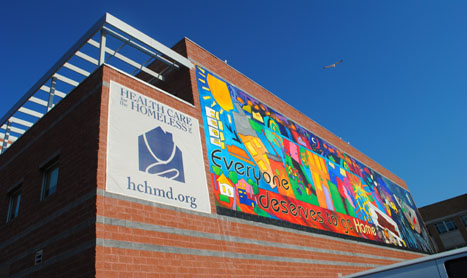ANNAPOLIS, Maryland – State agencies and community partnerships are adjusting to surges in homelessness, while housing and food assistance are lacking across the state, particularly for the homeless who are younger than 25.
“We’re ill-prepared for (the growing number of homeless youth) as a nation and state and county,” said Pamela Brown, director of the Partnership for Children, Youth and Families in Anne Arundel County, Maryland. “Not one shelter in Anne Arundel County is specifically made for youth. We can find them but it’s really difficult to get a roof over their heads.”
According to the Maryland Department of Housing and Community Development, there were more than 31,000 homeless individuals in Maryland in 2017, a 12 percent increase from 2015.
The number of unaccompanied youth between 18 and 24 increased by 12 percent from 2016 to 2017, to 2,120, the state reported. The Department of Housing and Community Development attributes much of this to low wage jobs and a lack of affordable, available housing.
Brown said the Anne Arundel County school system does a great job identifying homeless youth, but the resources within the county can’t meet their needs.
“Any night there’s about 1,100 children that are homeless within our school system, and (there are) many more that are out of the system or out of school but still below 25,” Brown said.
Youth Reach MD, an initiative created through recommendations by Maryland’s Task Force to Study Housing and Supportive Services for Unaccompanied Homeless Youth in 2014, works to survey and engage with homeless youth to better incorporate services and resources to fit their needs.
The organization conducts annual surveys of homeless youth around the state, collecting information on their recent housing situations, services used, and more. Their 2018 report is set to be released by the end of the year.
As defined by Youth Reach MD, homeless youth are individuals younger than 25 who are unaccompanied by a parent or guardian and lack a regular, adequate nighttime residence.
According to the preliminary 2018 findings, more than a third of the homeless youth population is in Baltimore. Across the state, Montgomery, Baltimore and Anne Arundel counties have the highest rates of homelessness after Baltimore City, making up roughly another third of the homeless youth population combined.
While permanent housing has increased by 10 percent since 2016, Amanda Miller, Youth Reach MD project director at the Maryland Center Institute for Innovation & Implementation, said with a rising homeless population across Maryland, there’s a “severe lack of resources across the state.”
The help homeless youth most sought wasn’t regular shelter but nutritional assistance, such as accessibility to food stamps or food banks.
Miller said getting access to nutritional food is difficult for many homeless youth, but those limits are also affected by access to transportation and a steady income. When it comes to finding a place to sleep over eating meal, shelter is usually the top priority so finding food often comes later.
Homeless youth in Maryland, according to the Youth Reach report, most commonly double up, or couch surf, going from a family member or friends’ home to another without a fixed bed. While long-term housing ranked second among needed services in the youth survey, food stamps and food bank accessibility was by far the most sought after.
“Some students get comfortable with couch surfing, it becomes their lifestyle and they become accustomed to it, but what doesn’t come with that is good nutrition support,” said MaryLynn Hinde, co-founder of the Student Homeless Initiative Partnership, known as SHIP, of Frederick County.
“Often they try to be as minimally invasive as possible if they’re already sleeping on the floor.”
Hinde is working with SHIP on a New Horizons program that works with unaccompanied youth in Frederick County’s high schools, pairing them with social workers who can provide them with a support network if they’re in need of a job, transportation, food and more.
She said that while food is a real issue, the social workers spend much of their time picking their students up from homes or motels and driving them to school, work, doctor’s appointments and driving lessons, among other activities they couldn’t access on their own.
According to the preliminary findings in the 2018 Youth Reach survey, the solution boils down to creating programs and offering resources specifically tailored toward homeless youth.
“They’re a very difficult group” to serve, Brown said. “They don’t want to be found. They’ve run away from a foster home or from abuse… lots of reasons.” Brown said that because of their age many homeless youth can’t access traditional homeless services, and regardless of their age, many avoid being thrown back into systems that have let them down in the past.
“People don’t recognize the amount of sensitivity and patience they need to use when dealing with a kid,” Hinde said. “They’re not bad kids. They have character, goals, dreams and are working hard to get past all the things that make their life hard.”

